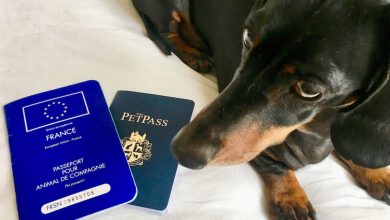The Expert Guide to Safely Cutting Your Dog’s Nails: What Every Pet Owner Needs to Know About Visiting the Vet

1. Introduction
Do you have a dog that needs its nails trimmed? If so, you may be wondering if it is necessary to take your pup to the vet for nail clipping. The answer is yes! It is important to have a professional trim your dog’s nails in order to keep them healthy and avoid any potential injuries. In this article, we will discuss the importance of having a vet cut your dog’s nails, how to prepare for the procedure, what to expect during the process, and aftercare tips.
2. What are Dog Nails?
Dog nails are made up of keratin, which is a hard protein found in human fingernails and hair as well. They are often referred to as “claws” because they are sharp and can be used for defense or attack purposes. Dog nails should be trimmed regularly in order for them to stay healthy and avoid any potential injuries caused by long or overgrown nails.
3. Benefits of Having Your Dog’s Nails Trimmed
There are several benefits associated with having your dog’s nails trimmed on a regular basis:
– Improved mobility: Keeping your pup’s nails short will help them move around more comfortably as they won’t be hindered by long or overgrown claws.
– Reduced risk of injury: Longer claws can get caught on things such as carpets or furniture which can cause painful tears in their skin or even broken bones if they try to pull away too quickly.
– Improved hygiene: Overgrown claws can collect dirt and bacteria which can lead to infections if not taken care of properly.
– Better posture: Having short claws will help your pup maintain good posture while walking or running as they won’t be hindered by long claws getting in the way of their movement.
4. When to Have a Vet Cut Your Dog’s Nails
It is recommended that you take your pup to the vet for nail trimming every 4-6 weeks depending on how quickly their nails grow and how active they are outdoors (which can wear down their claws). It is also important that you monitor their nails between visits so that you can address any issues before they become serious problems such as infection or injury due to overgrowth.
5. How to Prepare for Vet Nail Clipping
Before taking your pup in for nail trimming at the vet it is important that you prepare them properly so that the process goes smoothly:
– Brush their fur ahead of time so that there isn’t any excess fur around their paws which could get caught in the clippers;
– Make sure they are comfortable with being handled;
– Give them treats during the process so they associate nail clipping with something positive;
– Make sure all necessary supplies (i.e., clippers, styptic powder) are available before beginning;
6. What to Expect During the Veterinary Nail Clipping Procedure
The veterinary nail clipping procedure typically involves using special clippers designed specifically for dogs’ nails, although some vets may opt for grinding instead (which involves using an electric grinder). The vet will first examine each paw individually before cutting off just enough nail length so that it doesn’t curl back into their paw pads when walking/running – this ensures that no pain or discomfort is caused when moving around after trimming has been done. After all four paws have been trimmed, the vet may apply styptic powder (a coagulant) if needed in order to stop any bleeding caused by accidentally cutting too far down into the quick (the blood vessel inside each claw).
7. Aftercare Tips for Properly Trimmed Dog Nails
Once your pup’s nails have been clipped it is important that you provide proper aftercare in order for them heal properly:
– Keep an eye out for signs of infection such as redness or swelling;
– Apply an antibiotic ointment if needed;
– Monitor their gait – if there appears to be any discomfort when walking/running then take them back into see a vet right away; – Keep their paws clean and dry – this will help prevent infection from setting in; – Apply moisturizer regularly – this will help keep their paws soft and supple; – Provide plenty of exercise – this will help wear down new growth before it gets too long again!
8 Conclusion
Trimming your pup’s nails regularly at home or taking them into see a vet every 4-6 weeks is essential in order keep them healthy and free from potential injuries caused by overgrown claws! With proper preparation and aftercare tips, you can ensure that your furry friend stays safe while maintaining good hygiene habits at all times!




